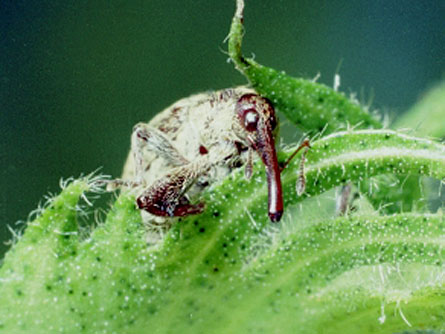Windy with a chance of weevils
Tropical storm reintroduced cotton pests to west-central Texas
In late summer 2007, a hungry horde of boll weevils appeared in an area of west-central Texas that had been weevil-free for four years. Blame it on the weather: Forensic analyses indicate that these unexpected immigrants from infested areas hopped a long ride north on the winds of tropical storm Erin.

Boll weevils were essentially eradicated from the cotton-growing region south of Abilene, Texas, by 2003. But in late August and early September 2007, more than 150 of the cotton-ravaging pests showed up in pheromone-baited weevil traps there, says Tom Sappington, an entomologist with the U.S. Department of Agriculture’s Agricultural Research Service in Ames, Iowa.
The source of new weevils was a mystery, since the closest areas with large populations of boll weevils — around Uvalde, to the south-southeast, and near Cameron, to the east — each lay at least 200 kilometers away. But results of several forensic techniques indicate that Uvalde is the most likely source of the sudden and unexpected infestation, Sappington and his colleagues report online October 13 and in an upcoming Journal of the Royal Society Interface.
In this case, farmers have learned that they can’t do much to prevent similar reinfestations. But in the future, such analyses may distinguish natural infestations from deliberate or inadvertent introductions that could be prevented.
To trace the weevils, researchers first compared genetic variations along ten stretches of DNA in 20 of the immigrant insects with those of weevils collected at 24 sites throughout Texas and northern Mexico. Analyses revealed that 19 of the 20 weevils were genetically similar to each other. That, plus the near-simultaneous appearance of the pests, suggests that the weevils came from one region in a single event, the scientists say.
Ten of the trapped weevils most likely came from the area surrounding Uvalde, five from Weslaco, four from Kingsville and one from Tampico, Mexico. All lie southeast or south-southeast of the reinfested zone, says Sappington.
In other tests, Sappington and his colleagues analyzed pollen grains found on 16 of the weevils captured in the newly infested area and compared them with those found on weevils trapped in Uvalde and Cameron around the same time. The analysis suggested that Uvalde was the more likely insect source.
Finally — and possibly most damning — the researchers used weather data to estimate where the weevils originated. A week or two before insects began showing up in weevil traps of west-central Texas, tropical storm Erin struck the Texas coast and then passed well south of Abilene. For a short while on August 16, winds into the area south of Abilene came from the east, says Sappington. But then, for a full eight days, winds spilled northward from Uvalde.
Together, the preponderance of the evidence indicates that the wayward weevils originated from Uvalde, the researchers say.
“This is a great piece of work,” says Charles T. Allen, an entomologist with the Texas AgriLife Research & Extension Center in San Angelo. “Each of these techniques could be used to draw the same conclusion but with a lot less certainty.”
Similarly multifaceted investigations can better help scientists determine how to respond to an unexpected infestation of any crop, including pests such as Mediterranean fruit flies, says Sappington. Such analyses might discern whether insects arrived via strong winds, rode in on contaminated equipment, or even were deliberately introduced in an act of bioterrorism, he notes.






